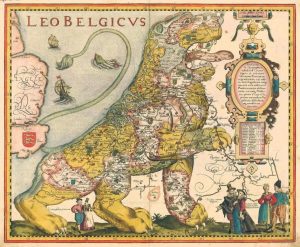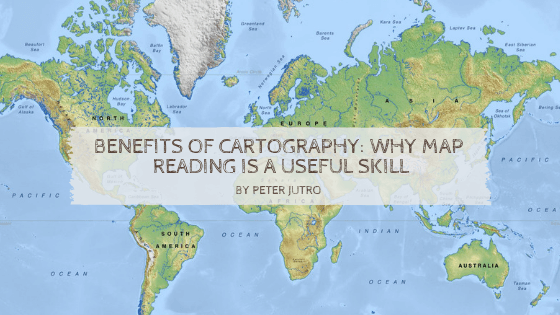Nowadays, travelers are more likely to type their destination into Google Maps than pull out the paper alternative. But even in today’s wired-in world, there are still wild places. Places that wifi can’t reach, where satellite signals dissipate and phone chargers might as well be rocks. Also, GPS, for all its convenience and simplicity, relies on sophisticated technology to function. And digital tech is notorious for breaking, crashing; malfunctioning: problems which–as Murphy’s Law dictates–occur more frequently the farther you are from an easy fix.
Whether you’re adventuring deep in the wilderness, or simply avoiding the possibility of a GPS glitch, knowing how to read a traditional paper map is undeniably useful. Cartography doesn’t require wires, wifi, or electronics of any kind, but beyond that, there are several advantages unique to navigating with a map.
A Wider Perspective
Google maps is only about 15 years old. Before that, opening a map meant expanding your reach, and learning about far away places. In addition, opening up a map means freedom from the tunnel vision of the GPS navigation arrow. Instead of staring down a singular path, map readers can better grasp context, and view the entirety of a geographic space. Nearby natural features, interesting side trips, and more: all of this is missed when focusing purely on an “efficient” path directed by GPS.
Safety
The unexpected is always possible when venturing off the well-trod path, even for those equipped with satellite navigation. Putting your safety in the hands of a gadget could prove perilous in certain situations; for example, a path you were following disappears under heavy snowfall, or a sudden downpour drenches your device. Maps can survive water, and they let you know where you are without forcing you down a specific trajectory. This allows for flexibility when facing unforeseen circumstances.
More Information
Maps don’t just provide your location, they orient you in relation to surroundings. From elevation levels to the location of every nearby trail (as well as everywhere those trails lead) maps offer a complete snapshot of the land, and all of its features. Map reading may take a bit more spatial awareness than simply obeying the nav arrow, but for hikers, adventurers, and anyone slightly curious about what lies beyond sight, the payoff is more than worth it.
No Alternative?
Many years ago as a graduate student, I was faced with a predicament. I was studying the natural and political history of the Florida Keys, but very little information about the area from the 15th through the 18th century seemed to be available. An extensive search at the General
Archives of the Indies in Seville, Spain confirmed that here was little written by contemporary writers and explorers. In addition, as I sought documentation of indigenous records, I learned that a large percentage had been destroyed in the course of the Spanish conquest of Mesoamerica. What to do? It turned out that the best sources of historical information were contemporary maps – artistic, fascinating maps – some drawn by passing navigators or by explorers, but all providing a wealth of detail about the contemporary, evolving understanding of at least the areas geography. And these maps could be found and studied in the extraordinary map collection of the Library of Congress.
An Enjoyable Hobby
There is a beauty in the precision with which each line of a map is crafted; each detail devised and laid to create one of the most successful vehicles for information ever invented. For millennia, maps have carried us beyond the borders of immediate perception. Old maps feature remarkable artistry and imagination; one of my favorites, and perhaps the most striking example of imaginative art in a map, is the “Leo Belgicus”: a 17th century motif in which many similar maps of Europe’s Low Countries were drawn within the frame of a massive lion.

Leo Belgicus, and many other maps of the period, can be a pleasure peruse, and offer a glimpse into how mediaeval and renaissance thinkers interpreted the world around them. And though lacking modern knowledge, they still managed to inject a sense of certainty into a world overflowing with mystery.

